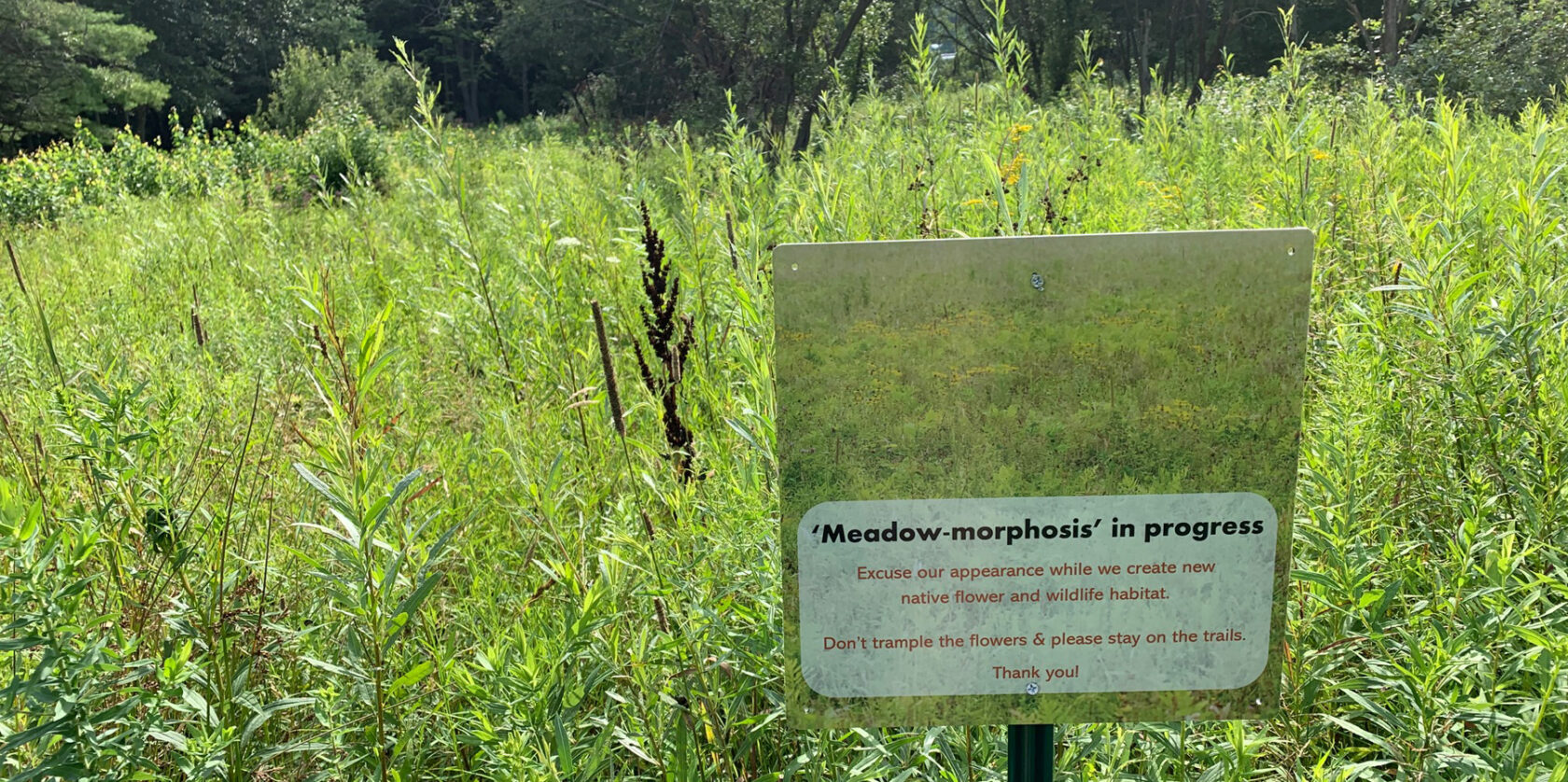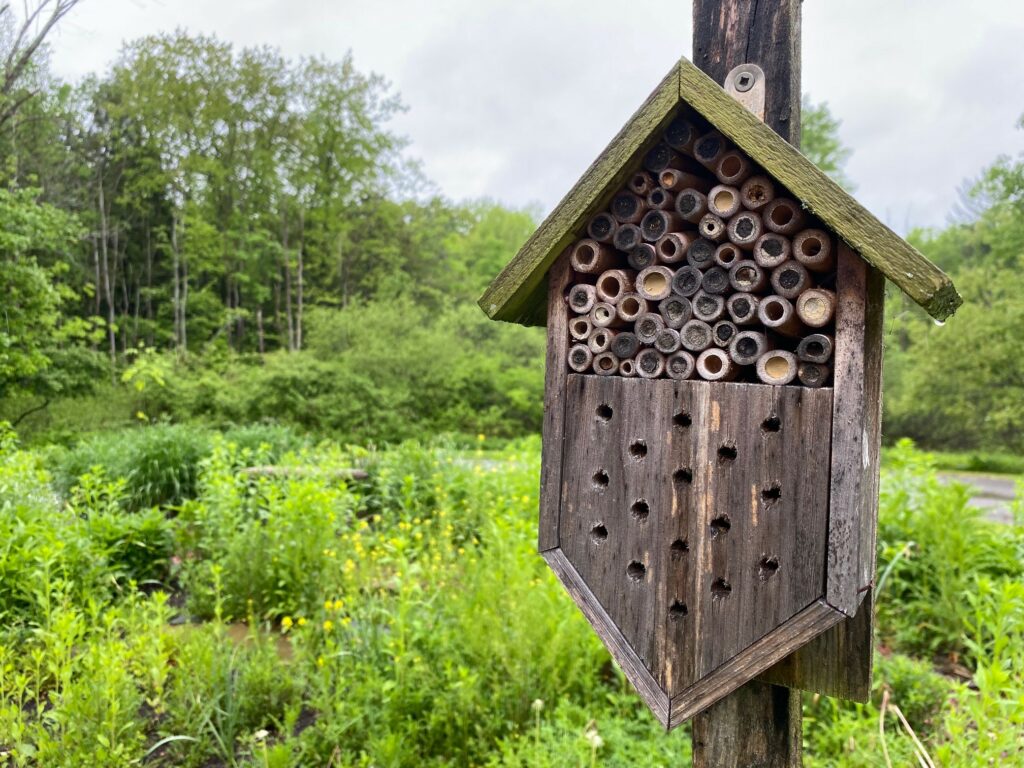
What is a Meadow? Generally, meadows are old farm fields. Left untended, meadows can be weedy and unsightly. With care and attention, however, meadows can be beautiful and filled with lots of different kinds of native plants and animals. That’s what we’re doing at RTPI. Our land is an old farmstead. Some of the old farm fields — with our help — are regenerating as woodland habitat. Some areas we are turning into pollinator meadows.
What’s so Special about a Pollinator Meadow? First of all, what’s a pollinator? Pollinators are mostly insects, including bees and butterflies. Every time bees and butterflies sip nectar from flowers, they pick up grains of pollen and carry them to other flowers. Without pollinators, many different kinds of plants — including the plants human eat — wouldn’t be able to reproduce. Unfortunately, pesticides and the loss of habitat is leading to a big decrease in pollinators. So, creating a pollinator meadow — along with pollinator gardens — is a great way to help bees and butterflies thrive.
Roger Tory Peterson and Pollinators. As a young boy, Roger’s first love was moths. Most moths only come out at night — and there are certain plants that only open at night so they may be pollinated by moths. Roger wanted to collect moths but at the time there was a curfew in Jamestown — children were not allowed outside after dark. So, he went to the police department and explained his problem. The chief of police wrote him a special note, giving Roger permission to be outside after dark in order to collect moths. To discover what Roger did with the moths he collected (you’ll be really surprised!) come inside the museum and read, For the Birds, The Life of Roger Tory Peterson.
They call it Common Milkweed but it is amazing as the host plant for monarch butterflies. Adult monarchs sip nectar from the big, fragrant flowers. They lay their eggs on the underside of the huge leaves. Once the eggs hatch, the caterpillars eat the leaves until they form a chrysalis and turn into a butterfly.

Image by Arthur Pearson
All of the pollen stuck to this bee’s body will rub off on each flower it visits and pollinate them. Bees also take pollen and nectar back to the nest to feed the rest of the colony. Can you find any bees covered in pollen in our pollinator meadow?

Image by Emily Nelson
Bees are important pollinators, too, which is why we place “bee houses” around our pollinator gardens and meadows. There are more than 4,000 different kinds of bees native to the United States — more than 400 may be found in Western New York. How many different kinds do you think make their home at RTPI?
